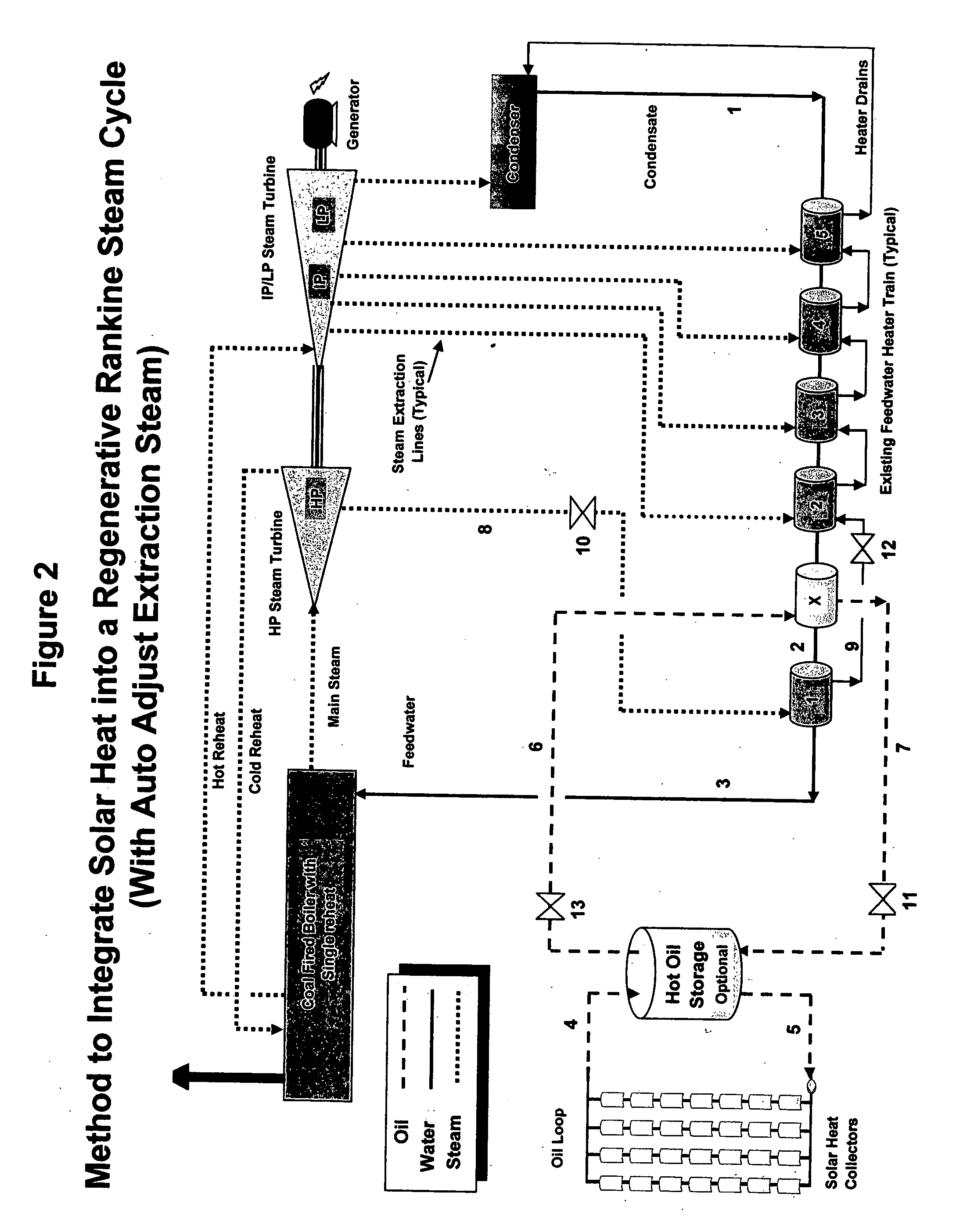Method and system integrating solar heat into a regenerative rankine steam cycle
a solar heat and rankine steam technology, applied in the field of electric power generation, can solve the problems of high entropic loss, inapplicability to rankine steam cycles, expensive solar boilers, etc., and achieve the effect of improving solar system efficiency
- Summary
- Abstract
- Description
- Claims
- Application Information
AI Technical Summary
Benefits of technology
Problems solved by technology
Method used
Image
Examples
Embodiment Construction
[0015] Referring to FIG. 1, solar heat is collected with trough technology or other suitable solar concentrating heat collection devices. Using the solar trough technology (which can be substituted with other high temperature solar heating devices), the sun's energy is “line” focused on a Heat Collection Element (HCE). The HCE is essentially a specially designed pipe that contains a fluid suitable for the collection of high temperature heat. Once the sun's energy has been focused and concentrated on the HCE, the energy is collected in the high temperature collection fluid 4 that is typically special oil designed to withstand high temperatures. Current technology limits this temperature to about 730-750 F. The hot oil is then pumped into a Hot Oil Storage (optional) that would provide both storage for extended operation or storage that would allow for higher outputs of thermal energy for shorter durations. The Hot Oil Storage also provides a buffer to smooth out heat spikes and heat ...
PUM
 Login to View More
Login to View More Abstract
Description
Claims
Application Information
 Login to View More
Login to View More - R&D
- Intellectual Property
- Life Sciences
- Materials
- Tech Scout
- Unparalleled Data Quality
- Higher Quality Content
- 60% Fewer Hallucinations
Browse by: Latest US Patents, China's latest patents, Technical Efficacy Thesaurus, Application Domain, Technology Topic, Popular Technical Reports.
© 2025 PatSnap. All rights reserved.Legal|Privacy policy|Modern Slavery Act Transparency Statement|Sitemap|About US| Contact US: help@patsnap.com



